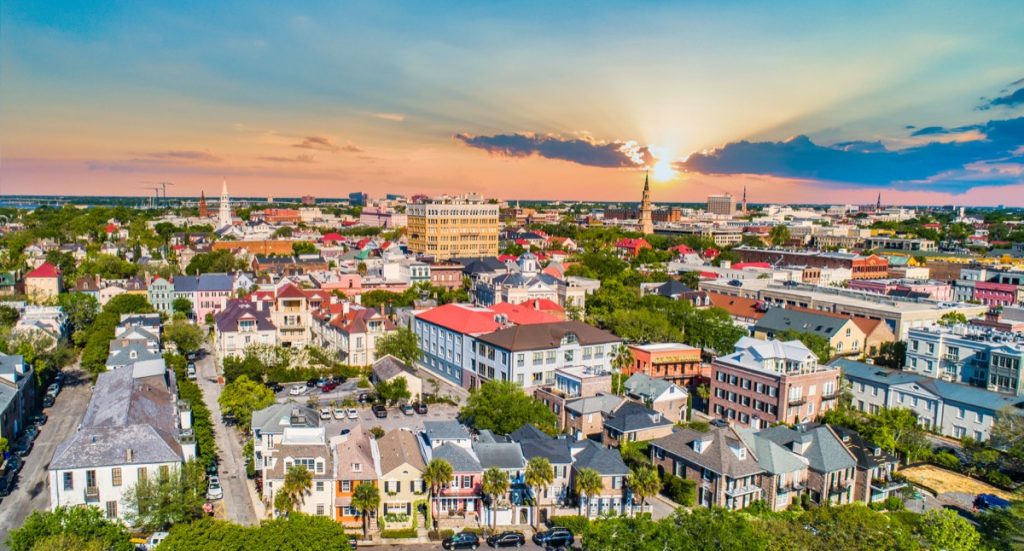These Seven States Seeing the Worst Surges in Flu
Even before the COVID-19 pandemic changed the way we monitored our health, the public was no stranger to dealing with seasonal viruses like the flu. According to a study from the Centers for Disease Control and Prevention (CDC), an average of eight percent of the U.S. population becomes sick with it each season. But the well-known virus can still behave differently from year to year, making some winters particularly difficult with higher case counts, increased hospitalizations, and higher-than-average deaths related to the sickness. And now, new information from the CDC shows that several states have already crossed into the agency’s highest category for flu activity, The Hill reports.
Even on a national scale, infections still appear to be outpacing most seasons, with data showing an early surge of the flu virus already picking up steam. The number of reported flu cases roughly doubled during the last week of October before jumping significantly again during the first week of November, CNN reports. As of Nov. 5, the CDC estimates that there have already been at least 2.8 million infections, 23,000 hospitalizations, and 1,300 from the virus nationwide.
“Among the people who study flu, there’s a little saying: ‘If you’ve seen one flu season, well, you’ve seen one flu season,'” William Schaffner, MD, a professor in the Division of Infectious Diseases at Vanderbilt University Medical Center and medical director of the National Foundation for Infectious Diseases, told CNN. “The implication is that they’re all a little bit different from each other, and that’s certainly the case.”
This year is also different in that its early start has arrived, along with a surge in Respiratory Syncytial Virus (RSV) infections in young children. And while some experts say that an early start to flu season doesn’t necessarily mean numbers will continue to skyrocket, the combined effect of both viruses surging can make it more difficult to treat the most severe cases—especially as COVID-19 continues to circulate.
“Even if just 10 percent of those need hospitalization, it creates a lot of stress on health care facilities, and so what we are seeing is we’ve had over 250 hospitalizations for RSV alone on top of the other circulating viruses,” Brian Cummings, MD, medical director of the Department of Pediatrics at Mass General for Children Hospital in Boston, told CNN.
Experts point out that early flu seasons can sometimes develop as much of the population hasn’t had a chance to get their annual vaccination yet, which is the most effective way to reduce its impact. “Never too late to get a flu shot,” Daniel Guzman, MD, a doctor at Cook Children’s Medical Center in Fort Worth, told CBS News. “I think we have to stress it’s an important thing to help protect yourself as well as everyone around you, that everyone goes out and get a flu shot.”
So, which places are seeing the worst surges of the virus right now? Read on to see which states have been marked as “very high” for flu activity by the CDC as of the week ending on Nov. 5.
READ THIS NEXT: This One Supplement Reduces Your Severe Flu Risk by 90 Percent, Study Says.

- Percentage of medical visits for influenza-like illness (ILI): 8.17
North Carolina’s early flu surge is already showing a serious increase from previous seasons. According to data from the state’s Department of Health and Human Services, there were 2,748 cases of the virus reported during the week of Oct. 29, tripling the rate of the week before and more than quadrupling the number reported during October 2019.
“This is going to be a big flu season according to how the cases look in North Carolina,” Usha Balmuri, MD, a family medicine physician at Atrium Health Ballantyne, told the Charlotte Observer.

- Percentage of medical visits for ILI: 8.99
As one of the states with the worst flu surges, local data shows that Virginia is currently seeing infection rates that usually don’t arrive until January or February. However, one expert says that despite the growing trend, it might not necessarily mean cases will stay high.
“If we do peak early, that means that we are peaking early, which means we’d see decreased activity in December, January, and February,” Cynthia Morrow, MD, a representative for the Virginia Department of Health Roanoke-Allegheny district, told local ABC affiliate WSET in a Nov. 1 interview.
Morrow advised the public to monitor themselves to get their flu shots and wash their hands regularly. She also added it’s best to monitor yourself for symptoms and stay home whenever you get sick to stop the spread of the virus, she told WSET.
READ THIS NEXT: If You Were Born Before This Year, Get a Blood Test, CDC Says.

- Percentage of medical visits for ILI: 9.16
Doctors in Georgia have noticed that the flu this year is creating a surge in hospitals—especially with younger patients.
“I’ve been in practice over 25 years, and this is probably the busiest I’ve ever been,” Jennifer Shu, MD, a pediatrician with Children’s Medical Group in Decatur, told local FOX affiliate WAGA.
“These kids are asleep on the exam tables, when I enter the room,” Shu told the news outlet. “They are achy. They are really uncomfortable. They just complain about everything: ‘I don’t want to look at the light. My eyes hurt, my hair hurts, my bones hurt, everything hurts.'”
She says the best thing the public can do to protect themselves and others from the virus is to get vaccinated. “And, if you still catch the flu, it can make the flu less severe and possibly shorter,” she added.

- Percentage of medical visits for ILI: 9.28
The early flu surge in Mississippi is also affecting the younger portion of the population. Last week, four different schools in the Lamar County School District reported that they were dealing with outbreaks of the virus among their students, Pine Belt News reported.
“We’re still doing sanitation practices like washing hands, cleaning surfaces, and those things,” Steven Hampton, district superintendent, told the outlet. “We’re doing everything we can to mitigate the spread throughout our schools as we move forward.”
RELATED:
For more up-to-date information, sign up for our
daily newsletter.

- Percentage of medical visits for ILI: 11.54
Flu cases are on the rise in Alabama. According to the state’s Department of Health, two adults and one child have even died from the virus as of Nov. 10, AL.com reported.
“This is the highest flu activity that we have seen this early in the season since the 2009 Influenza A/H1N1 pandemic,” Wes Stubblefield, MD, a pediatrician and District Medical Officer with the Alabama Department of Public Health, said in a news release.
Other data showed that the majority of patients were young people between the ages of 5 and 24. “Outpatient visits for influenza increased over 10-fold between September and October and have shown no signs of slowing in the first five days of November,” Nola Ernest, MD, president of the Alabama Chapter of the American Academy of Pediatrics, told AL.com

- Percentage of medical visits for ILI: 12.26
Medical professionals in Tennessee say that the current surge in flu patients in the state is noticeable in hospitals.
“It’s about as bad a year as we have seen since the prior flu pandemic,” Steve Threlkeld, MD, an infectious disease specialist at Baptist Memorial Hospital in Memphis, told local CBS affiliate WREG. “Walk any emergency department waiting room just about [anywhere] in the country, and it’s full of people with flu-like illness. So, we worry about the increase in hospitalizations.”
Fortunately, Threlkeld adds that taking the same well-known steps to stay healthy can be incredibly effective, such as washing your hands, sneezing into your elbow, and getting vaccinated.
“If you do those simple kinds of things, you can really cut down on the transmission of flu. As we said, the flu is easier to prevent than COVID has been. If we do those kinds of things that most folks’ grandmother taught them, it can really make a dent,” he told WREG.
READ THIS NEXT: I’m a Pharmacist, and This Is the Pain Reliever I Recommend.

- Percentage of medical visits for ILI: 12.72
Health officials in South Carolina say the state is seeing flu season hit harder and earlier than usual. So far, there have been more than 16,500 confirmed cases of the virus, compared with 100 at the same time last year, according to the state’s Department of Health and Environmental Control (SCDHEC).
“That’s a really significant difference and one of the most active flu seasons we’ve had in the last decade,” Jonathan Knoche, MD, a medical consultant for the SCDHEC, told The Post and Courier.
" Conservative News Daily does not always share or support the views and opinions expressed here; they are just those of the writer."

Now loading...